Abstract
As adolescents acquire agency and become contributing members of society, it is necessary to understand how they help their community. Yet, it is unknown how prosocial behavior develops in the context of community-based prosocial behaviors that are relevant to adolescents, such as donating time to charities. In this longitudinal functional magnetic resonance imaging study, adolescents (N=172; mean age at wave 1=12.8) completed a prosocial task annually for three years (N=422 and 375 total behavioral and neural data points, respectively), and 14 days of daily diaries reporting on their prosocial behaviors two years later. During the task, adolescents decided how many minutes they would donate to a variety of local charities. We found that adolescents donated less time to charities from early to mid adolescence. Longitudinal whole-brain analyses revealed declines in ventrolateral prefrontal cortex (vlPFC) activation, as well as inverted U-shaped changes in precuneus activation when adolescents donated their time from early to mid adolescence. A less steep decrease in vlPFC activation predicted greater real-life prosocial behaviors in youth’s daily lives two years later. Our study elucidates the neurodevelopmental mechanisms of prosocial behavior from early to mid adolescence that have enduring effects on daily prosocial behaviors in late adolescence.
1. Introduction
Prosocial behaviors are behaviors that are intended to benefit others, such as providing emotional support to a loved one, helping a stranger with directions, and donating money to a charitable cause. As adolescents begin to gain agency and simultaneously continue to fine-tune their social-cognitive skills, connecting and contributing to their broader community become a key developmental need (Fuligni, 2020). As such, adolescence is a developmental window critical for the development of prosocial behaviors, particularly those that can benefit the greater good (e.g., Padilla-Walker et al., 2018). Though drastic neurobiological changes are thought to support adolescent prosocial behaviors, no studies have investigated the neurodevelopmental changes of community-based prosocial behaviors and further, it is unknown what this neurodevelopment means in the context of day-to-day prosocial behaviors (e.g., Crone and Achterberg, 2022; van de Groep et al., 2022). The current longitudinal functional magnetic resonance imaging (fMRI) study explored neurobiological changes linked to community-based prosocial behaviors (i.e., how much time adolescents are willing to spend to help various charities) from early to mid adolescence and whether these changes were associated with daily prosocial behaviors in late adolescence.
A rich body of prior work has shown an upsurge in prosocial behaviors during adolescence (Grütter and Buchmann, 2022, Güroğlu et al., 2014, Padilla-Walker et al., 2018). Supported by increases in perspective-taking and empathy during adolescence, this rise is seen across multiple domains: adolescents engage in more prosocial behaviors regardless of whether that behavior involves a close other or a stranger, and even when that behavior can occur at a cost to oneself (Crone et al., 2008, Karan et al., 2022, Padilla-Walker et al., 2018, Van der Graaff et al., 2018). By contrast, there is also evidence for prosocial behaviors decreasing during this time (Carlo et al., 2007, Luengo Kanacri et al., 2013, Taylor et al., 2018). Supported by increases in norm-based giving and thus prosocial behaviors perhaps becoming more intentional, this decline is also seen across multiple domains such that adolescents show increasing prosocial behaviors toward friends but decreasing prosocial behaviors toward anonymous and disliked peers (Güroğlu et al., 2014, Meuwese et al., 2015, van de Groep et al., 2022). Many researchers have posited that these disparate findings may be due to differences in the recipient of the help (e.g., liked versus disliked peers), age range of interest (e.g., changes from early to mid adolescence versus from mid to late adolescence), and how the behavior was assessed (e.g., experimental task versus self-report). Regardless, these studies underscore that adolescence is an important developmental time during which prosocial behaviors are changing and warrant further investigation to carefully unpack how these trajectories unfold.
One important form of prosocial behaviors is community-based prosocial behaviors, a behavior that benefits unknown or unfamiliar targets within one’s community, such as charitable organizations. As adolescents gain agency, youth become agents of social change and many of their prosocial behaviors involve societal benefits such as contributing to charities (Crone and Fuligni, 2020, Fuligni, 2019). Indeed, recent data published by the AmeriCorps and U.S. Census Bureau revealed that of all age groups (16 years old or older), 16 – 17 year olds had the highest rates of community-based prosocial behaviors (28 % of 16 – 17 year olds; AmeriCorps, U.S. Census Bureau. 2021). Distinguishing how adolescents contribute to their broader surrounding from their immediate surrounding is necessary since community-based prosocial behaviors gauge how adolescents value and think about the greater good, whereby the outcomes of their prosocial actions may be more intangible than behaviors that help their immediate surrounding. That is, unlike prosocial behaviors toward family and friends that may occur out of obligation, those toward the community may be motivated by others’ actual needs, and may therefore reflect their genuine intentions to help and benefit others (Cnaan et al., 1996, Einolf, 2008). There is also a positive feedback loop such that for adolescents, community involvement opens new doors of opportunities for new involvements, which in turn promotes even greater community involvement (Corporation for National and Community Service, 2005). Therefore, understanding how adolescents engage in community-based prosocial behaviors may have implications for how they continue to grow as active citizens.
Though experimental studies that examined the development of community-based prosocial behaviors have shown that adolescents donate more money to charities across age, little is known about how adolescents share their time to charities (Spaans et al., 2023). Adolescents are continuing to hone their financial literacy skills, and there is a large heterogeneity among adolescents in how they subjectively value monetary rewards and in their ability to contribute financially (Amagir et al., 2018, Insel et al., 2019). Along with a heightened attunement to social rewards, adolescents also value and engage in community service, suggesting that understanding how adolescents directly interact with others (e.g., engage in community service) and volunteer their time may be more suitable for this developmental group (Foulkes and Blakemore, 2016, Lanza et al., 2023, Metzger and Ferris, 2013). Though older adolescents engage in more of these behaviors, early adolescence is when youth generally begin contributing to their community and younger adolescents reap greater benefits of community service than do older adolescents (Crone and Fuligni, 2020, Lakin and Mahoney, 2006). Taken together, focusing on donating time rather than money to charities may be more representative of adolescent community-based prosocial behaviors and is a unique addition to the existing literature that has largely focused on donating money. Investigating developmental changes in time donations starting in early adolescence can identify the specific context and developmental period that can be leveraged to harness prosocial behavior development.
Neuroimaging research has begun to reveal how age-related changes in neural patterns in brain regions related to reward, social cognition, and cognitive control act in concert with age-related changes in prosocial behavior. Brain regions involved in reward processing, such as the ventral striatum (VS), are thought to underlie the “warm glow”, or the feeling of joy, of helping another person and thus represents the inherently rewarding nature of prosocial behavior (Morelli et al., 2018). Additionally, brain regions involved in social cognition, such as the dorsomedial prefrontal cortex (dmPFC) and temporoparietal junction (TPJ), may subserve perspective-taking, which is necessary to understand how one’s prosocial actions impact others (Bellucci et al., 2020). Lastly, brain regions involved in cognitive and behavioral regulation, such as the dorsolateral and ventrolateral prefrontal cortex (dlPFC, vlPFC), may be associated with planning an appropriate course of action to achieve a prosocial goal and enacting it (Bellucci et al., 2020). Though not studied in the context of community-based behaviors, increases in VS activation during vicarious joy processing are linked to increases in monetary donation to charities in adolescents, demonstrating that changing neural processing of other-oriented reward may help explain adolescents’ increasing prosocial behaviors (Spaans et al., 2023). Similarly, there are dlPFC, vlPFC, dmPFC, TPJ, posterior superior temporal sulcus (pSTS) activation changes during prosocial giving to family, friends, and strangers from childhood to adolescence, highlighting these regions as potential regions that also support the development of community-based prosocial behaviors (Do et al., 2019, Karan et al., 2022; but see van de Groep et al., 2022).
Despite this foundational understanding of the developing brain in the context of prosocial behaviors, it is unknown whether neurodevelopmental changes promote real-life prosocial behaviors and whether these predictive effects are long-lasting. That is, it is unknown whether there are longitudinal brain-behavior relations such that adolescents who show faster or slower rates of neurodevelopment in key brain regions (those related to reward, social cognitive, and cognitive control) are more likely to engage in helping others in the future. While most prior research has been cross-sectional, longitudinal neuroimaging is needed to model within-person changes in neural activation, which can be further leveraged to examine individual differences in the rates of neurodevelopment. Indeed, longitudinal changes in VS activation during vicarious joy processing are linked to heightened perspective-taking and subjective pleasure of donating (Spaans et al., 2023). Given that perspective-taking and subjective pleasure of donating are essential building blocks of prosocial behaviors, individual differences in neurodevelopment may explain individual differences in day-to-day prosocial behaviors.
The current neuroimaging study examined longitudinal whole-brain changes (across the first 3 waves of the study) when adolescents made decisions about donating their time to various local charities. Further, we examined how these neurodevelopmental changes predict real-life prosocial behaviors 2 years later (5th wave of the study), using a daily diary method every day for 14 consecutive days. Unlike self-reported questionnaires that typically ask participants to retrospectively report on their prosocial behavior within the past year, daily diaries have the strength of reporting behavior on that given day over the course of multiple days and thereby enhance reporting accuracy. The prosocial behaviors we asked participants in the daily diary each day ranged from helping the community (e.g., participating in a protest) to helping close others (e.g., helping a friend with homework), capturing a range of adolescent prosocial behaviors. Given prior findings on increases in monetary donations to charities across age, we hypothesized that time donations would also increase across age, specifically from early to mid adolescence. In line with behavioral changes, we hypothesized that there would be neural changes within key brain regions (e.g., VS, dlPFC) during time donations, whereby faster rates of neurodevelopment would be linked to greater daily prosocial behaviors two years later.
2. Materials and methods 2.1. Participants and procedure
Adolescents who were in 6th or 7th grade were recruited from 3 public middle schools in southeast United States to participate in a longitudinal school-based study. A subset of these participants was recruited to participate in a longitudinal fMRI study. At waves 1–3, participants completed an fMRI scan, during which they completed the Donating Time Task. At wave 1, participants had to be at least 12 years old (or within 2 months of turning 12 years old) and in 6th or 7th grade in order to participate in the fMRI scan. See supplementary materials for additional recruitment eligibility. At waves 4 and 5, adolescents completed a daily diary. The current study only used 4 waves of data (waves 1–3 and 5). All participants (regardless of whether they had completed the tasks inside or outside the fMRI scanner in prior waves) were eligible for the daily diary session. Participants and their caregiver provided informed assent and consent and the University of North Carolina at Chapel Hill’s Institutional Review Board approved all aspects of the study.
In order to reach our target sample size of 150 participants after accounting for attrition and for excluded participants between waves of data collection, we recruited 148 participants at wave 1 and 30 additional participants at wave 2. The Donating Time Task was administered only in the first 3 waves of the study. Since exclusionary criteria were different for behavioral and neural analyses (see supplementary materials), the sample sizes of analyses involving behavioral data and those involving fMRI data were different. Behavioral analyses included 172 participants with 422 data points across 3 waves and fMRI analyses included 166 participants with 375 data points across 3 waves. The 172 participants were of diverse racial background: 34.3 % Hispanic/Latinx, 29.7 % White, 23.3 % Black, 9.3 % Mixed, and 3.5 % as identifying as Other. See Table 1 for participant and sample size information at each wave. Daily diary data from wave 5 were used in the current manuscript. At wave 5, 104 adolescents participated, of which 97 participants completed the daily diary. Four participants were excluded for not completing the measures of interest (see below). In total, 93 participants were included in the analysis that tested the association between brain development and prosocial behavior.1
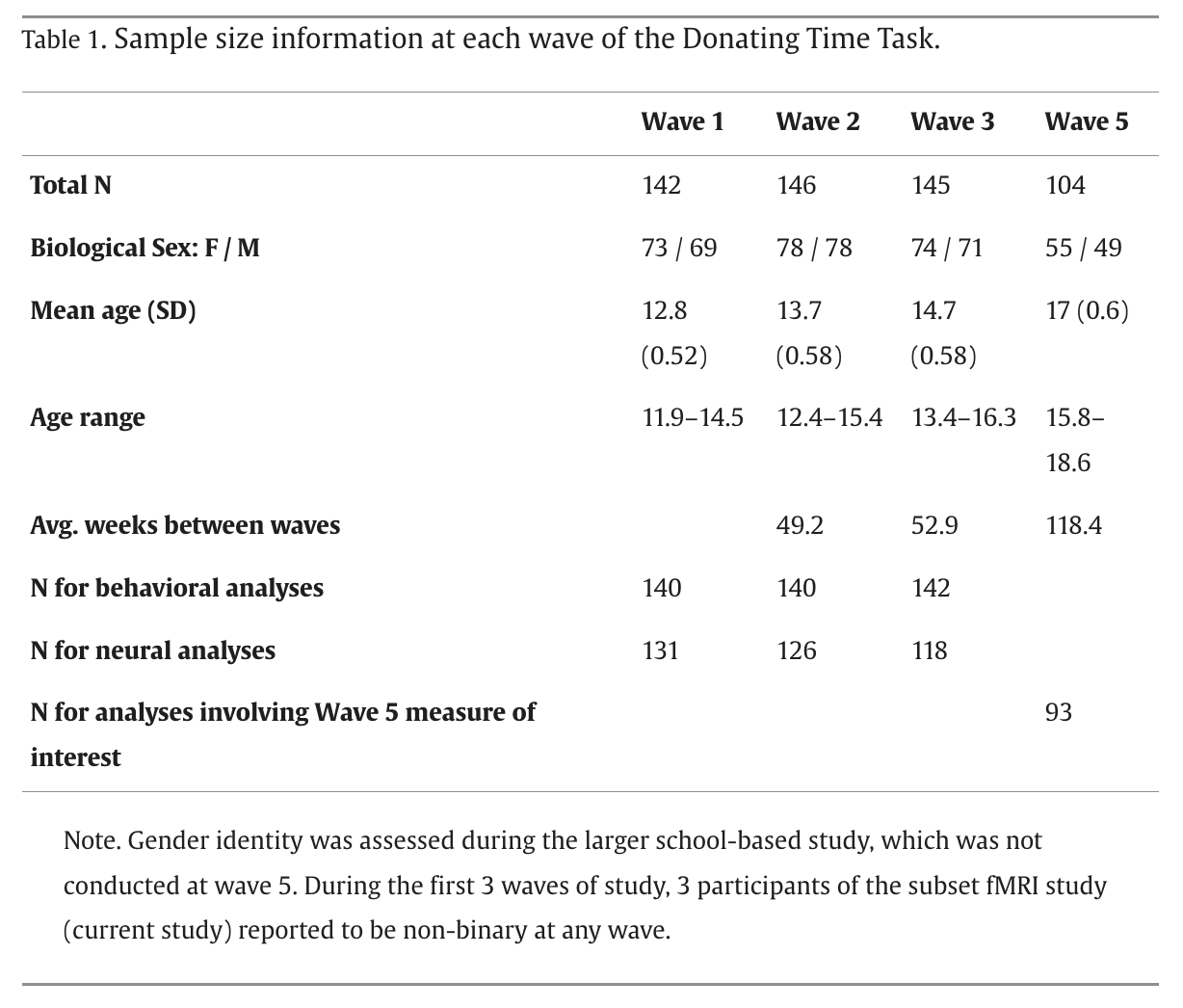
2.2. Donating time task
Participants completed a novel Donating Time Task during an fMRI scan during which they indicated how many minutes (0–9 min) they would donate to 10 local charities (see Duell et al., 2021 for a variation of this task; Fig. 1). During a training session before the scan, participants learned about these charities, rated how much they cared about each charity (from 1 = “Not at all” to 5 = “Very much”), and indicated their top 3 charities of choice. See supplementary materials for what the participants were presented with during the training session.
The task consisted of 40 trials, which included 30 charity and 10 control trials. Each trial presented one charity and asked participants how many minutes they would donate to that charity. Participants were told that at the end of the task, the computer would randomly select one trial and that they would spend that amount of time stuffing envelopes with fundraiser letters for the chosen charity during their break. In reality, participants’ top choice for the charity they had rated the highest was the amount of time they spent stuffing envelopes. At waves 1 and 2, following the scan, participants were provided with a pile of fundraiser letters and envelopes, and spent that amount of selected time stuffing the envelopes for that charity. At wave 3, following the scan, participants were told that they will skip stuffing the letters due to time constraints.
On each trial, participants were first shown a fixation screen, which was jittered around an average of 2300 ms (range: 507 – 4217 ms). Next, on charity trials, the charity (logo and name) and instructions were shown for 3000 ms, during which participants made their decision indicating with a button press how many minutes they would like to donate (see Fig. 1). On control trials, participants were instead presented with a blank square and a message stating “Just Press”, during which participants pressed any button. After a delay of 10 ms, participants’ decision was shown for 500 ms. If participants did not make a decision within the given time, participants were presented with a screen indicating “Too Late” for 1000 ms.
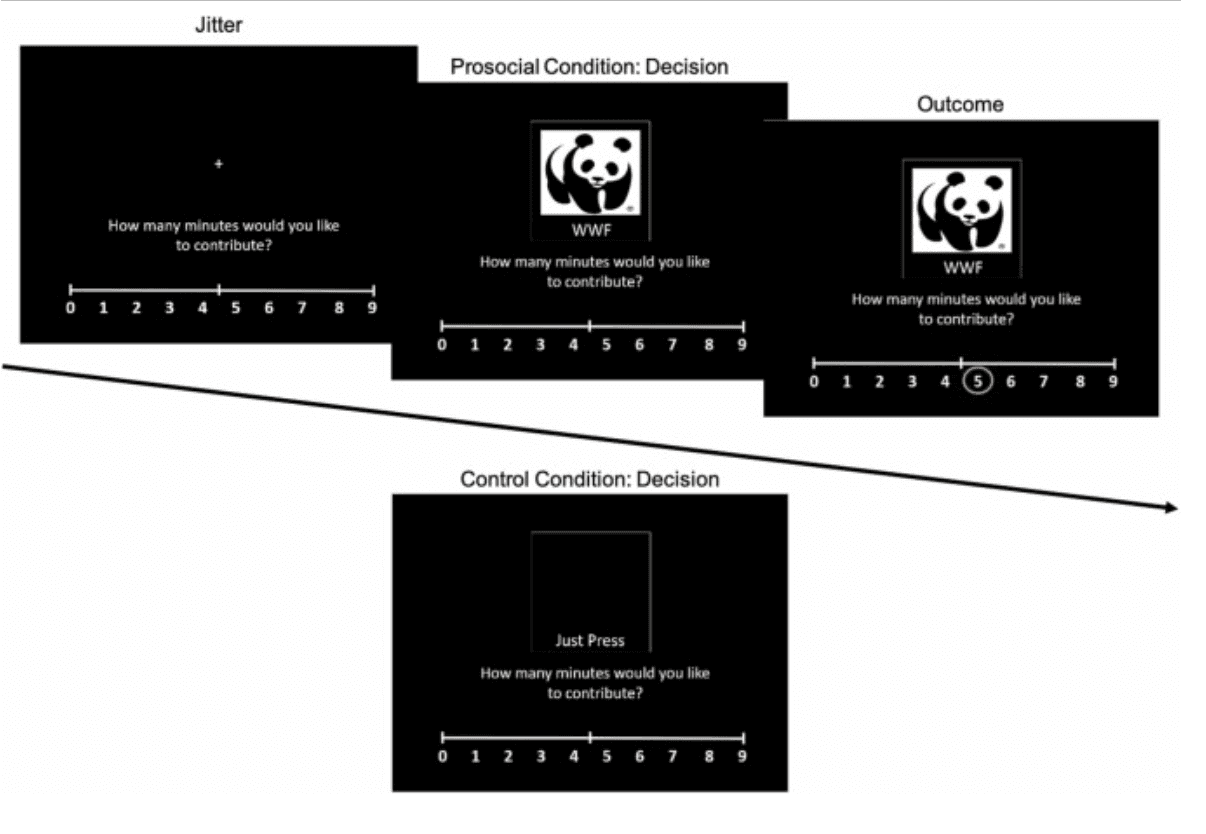
Fig. 1. Example charity and control trials of the Donating Time Task.
2.3. Daily prosocial behavior
At wave 5, adolescents completed ecological momentary assessments three times per day and a daily diary each evening over a span of 2 weeks using ExpiWell (https://app.expiwell.com ), an application which they downloaded to their personal phone with the virtual assistance of a study personnel. At 8PM each day, adolescents were sent a daily diary survey, which took approximately 5 min to complete. Adolescents were asked to indicate whether they engaged in 12 prosocial behaviors that day (e.g., “helped your family with chores and errands”, “provided emotional support to a friend (e.g., listened, gave advice, comforted)”, “posted or shared content about social issues or politics online”). To compute a daily prosocial behavior score for each participant, we first calculated how many prosocial behaviors adolescents engaged in on each day (i.e., total prosocial behaviors on each day) and subsequently computed the average amount of prosocial behavior across their participation days (i.e., average of the total prosocial behaviors on each day). The daily prosocial behavior score was computed using all 12 daily prosocial behaviors because community-based prosocial behaviors at the daily level, especially over two weeks, were rare such that out of 93 participants, only 20 engaged in any community-based prosocial behaviors across two weeks. Further, since we were interested in how neurodevelopment is linked to adolescents’ day-to-day prosocial behaviors, we decided to use a range of everyday prosocial behaviors and not limit ourselves to just community involvement. See Table 2 for a full list of prosocial behaviors and participants’ average daily engagement in each of these behaviors.

2.4. fMRI data acquisition, preprocessing and analysis
Imaging data were collected using a 3 Tesla Siemens Prisma MRI scanner. The Donating Time Task was presented on a computer screen and projected through a mirror. A high-resolution T2*-weighted echo-planar imaging (EPI) volume (TR = 2000 ms; TE = 25 ms; matrix = 92 ×92; FOV = 230 mm; 37 slices; slice thickness = 3 mm; voxel size = 2.5 ×2.5 x 3 mm3) was acquired coplanar with a high-resolution T2*-weighted, matched-bandwidth (MBW), structural scan (TR = 5700 ms; TE = 65 ms; matrix = 192 ×192; FOV = 230 mm; 38 slices; slice thickness = 3 mm). In addition, a T1* magnetization-prepared rapid-acquisition gradient echo (MPRAGE; TR = 2400 ms; TE = 2.22 ms; matrix = 256 ×256; FOV = 256 mm; 208 slices; slice thickness = 0.8 mm; sagittal plane) was acquired. The orientation for the EPI and MBW scans was oblique axial to maximize brain coverage and to reduce noise.
Preprocessing was conducted using FSL (FMRIB’s Software Library, version 6.0; www.fmrib.ox.ac.uk/fsl ) and included the following steps: skull stripping using BET; motion correction with MCFLIRT; spatial smoothing with a Gaussian kernel of 6 mm, full-width-at-half maximum; high-pass temporal filtering with a filter width of 128 s (Gaussian-weighted least-squares straight line fitting, with sigma = 64.0 s); grand-mean intensity normalization of the entire 4D dataset by a single multiplicative factor; and individual level ICA denoising for artifact signal using MELODIC (version 3.15), combined with an automated signal classifier (Tohka et al., 2008; Neyman-Pearson threshold =.3). For the spatial normalization, the EPI data were registered to the T1 image with a linear transformation, followed by a white-matter boundary-based transformation using FLIRT, linear and non-linear transformations to standard Montreal Neurological Institute (MNI) 2 mm brain using Advanced Neuroimaging Tools, and then spatial normalization of the EPI image to the MNI. Quality check during preprocessing and analyses ensured adequate signal coverage.
The task was modeled using an event-related design within the Statistical Parametric Mapping software package (SPM12; Wellcome Department of Cognitive Neurology, Institute of Neurology, London, UK). Individual-level fixed-effects models were created for each participant using the general linear model in SPM with 3 conditions: (1) prosocial decisions (i.e., time trials with decisions of more than 1 min), (2) non-prosocial decisions (i.e., time trials with decision of 0 min), and (3) control trials. If participants did not make a decision of 0 min, then they were modeled with only 2 conditions. Trials in which participants did not respond and volumes containing motion greater than 0.5 mm framewise displacement were included as separate regressors of no interest. Six motion regressors were modeled as covariates of non-interest to control for head movement in six dimensions. Each trial was modeled using the onset of the charity (or control) and reaction time as the duration. Jittered events such as the fixation cross were not explicitly modeled and therefore served as the implicit baseline for task conditions.
We conducted longitudinal whole-brain analyses using AFNI’s 3dLMEr program, which allows for voxel-level whole-brain analyses of linear mixed effects (maximum-likelihood, multilevel model; Chen et al., 2013). Specifically, we modeled how charity decision – control decision contrast changed linearly (steady increase or decrease) and quadratically (an increase followed by a decrease or a decrease followed by an increase) across age (minimum-centered at age 11). Models were run separately for linear and quadratic trajectories. To correct for multiple comparisons, we conducted a Monte Carlo simulation using AFNI’s 3dFWHMx and 3dClustSim programs (Ward et al., 2000) and the group-level brain mask. Smoothness was estimated with the -acf option (-acf a,b,c parameters: 0.552, 4.537, 12.608), which used an average of individual-level autocorrelation function parameters that were obtained using each participants’ residuals from their first-level models. This simulation indicated that a p <.05 Family-Wise Error corrected would be achieved with a voxel-wise threshold of p <.005 and a minimum cluster size of 193 voxels.
2.5. Analysis plan
We followed a formal model-building procedure to determine the functional form that best fits age-related changes in behavioral performance in the Donating Time Task. To do so, we used a series of 2-level univariate growth models with time points (i = 3 time points maximum) nested within individuals (j = 172 participants; conducted using nlme::lme package in R). We estimated the following linear trajectory model with random intercepts (i.e., starting points) and slopes (i.e., growth), and average time donated in task as the dependent variable (DV):
Level 1:

Level 2:
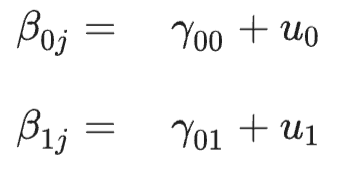
Next, we assessed whether a quadratic trajectory is a better functional form by adding a quadratic growth term (i.e., Age x Age). The linear and quadratic trajectory models were formally compared to one another by conducting a log likelihood ratio (LLR) test with difference in degrees of freedom (i.e., difference between two models in their degrees of freedom) and level of significance of p <.05. All model intercepts were centered at 11 (i.e., minimum age) and all models were be fit with full information maximum likelihood estimates. Once we determined the best-fitting functional form of average time donated in task, we further examined age-related changes in the average time donated to favorite charity, and maximum and minimum amount of time donated.
Finally, to determine each adolescents’ predicted rate of change in neural activation (identified using longitudinal whole-brain analyses) across age, we extracted each adolescents’ predicted random slopes using lme4::coef package in R. We then conducted a regression of later daily prosocial behavior on the rate of change in neural activation to examine whether linear and nonlinear neurodevelopment predicts real-life prosocial behavior approximately 2 years later.
3. Results 3.1. Developmental changes in task performance
To test whether adolescents’ average amount of time donated to charities changed linearly or quadratically across age, we compared the linear and quadratic trajectory models using a LLR test. LLR test that compared the two models revealed that adding a quadratic age term did not improve model fit (LLR = 1.42, p = 0.23) and thus, a linear trajectory model was better suited to model age-related changes in the average amount of time donated to charities in the task. Linear univariate growth model revealed that adolescents donated less time across age (γLinearAge= -0.45, p < 0.001; Fig. 2). We saw the same developmental decrease when we focused on adolescents’ favorite charity (γLinearAge= -0.35, p = 0.002), suggesting that adolescents were generally willing to donate less time across time, regardless of how much they cared about the given charity. Further, the maximum amount of time (i.e., highest amount of minutes donated across trials) adolescents donated decreased across age (γLinearAge= -0.5, p < 0.001); interestingly, the minimum amount of time (i.e., lowest amount of minutes donated across trials) did not change (γLinearAge= -0.12, p = 0.2).
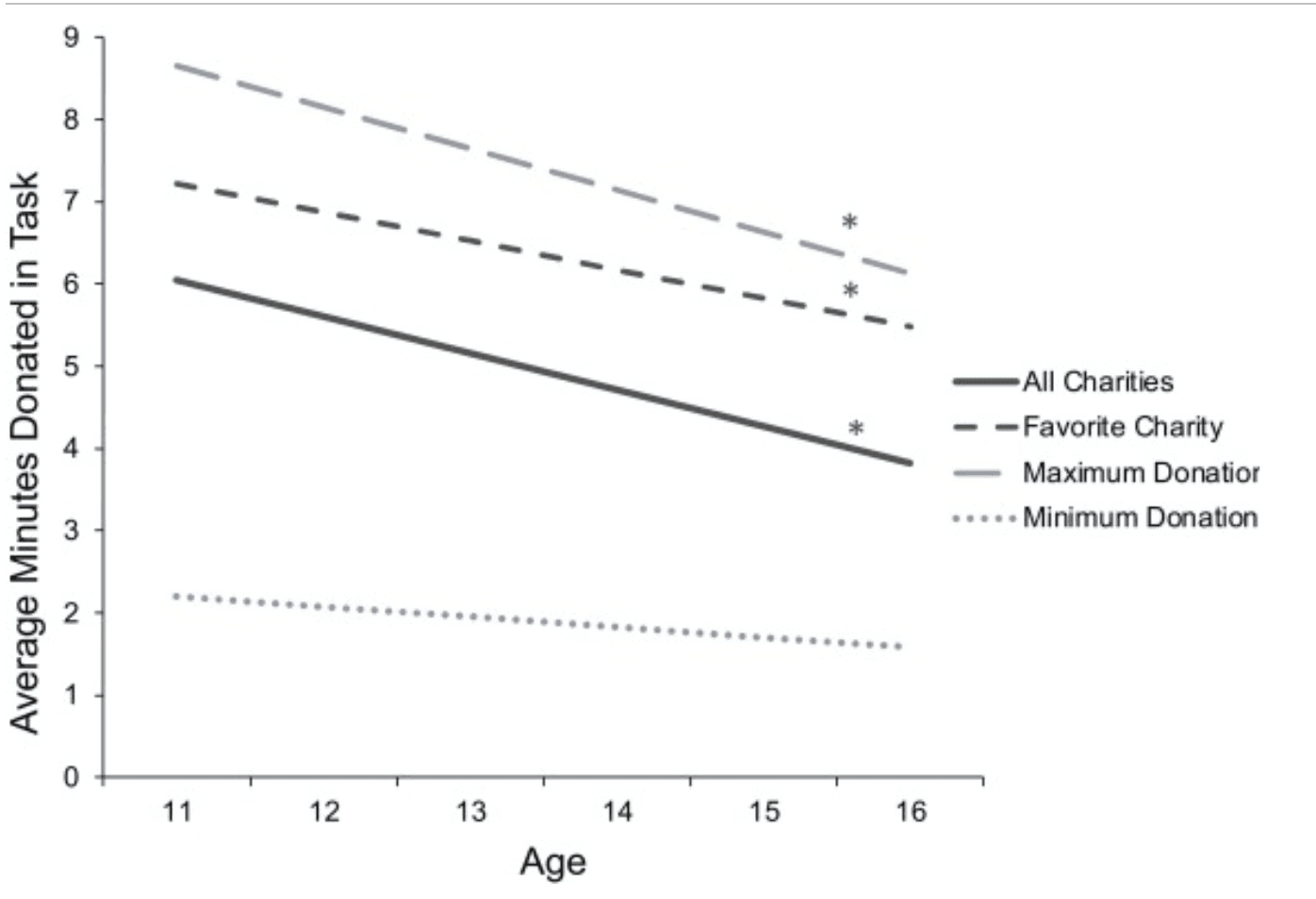
Fig. 2. Adolescent participants’ behavioral performance in the Donating Time Task. 3.2. Longitudinal whole-brain changes
Longitudinal whole-brain analyses identified linear decreases in the right ventrolateral prefrontal cortex (vlPFC; x,y,z = 54, 40, -6; k = 256 voxels) during prosocial versus control decision-making. Parameter estimates were extracted from the right vlPFC cluster and plotted for illustrative purposes in Fig. 3A. For the quadratic trajectory model, longitudinal whole-brain analyses identified negative (i.e., inverted U-shaped) changes in the left precuneus (x, y, z = -16, -66, 46; k = 1286; Fig. 3B) during prosocial versus control decision-making. See Table 3 for a list of clusters that survived threshold correction for both linear and quadratic trajectory models.
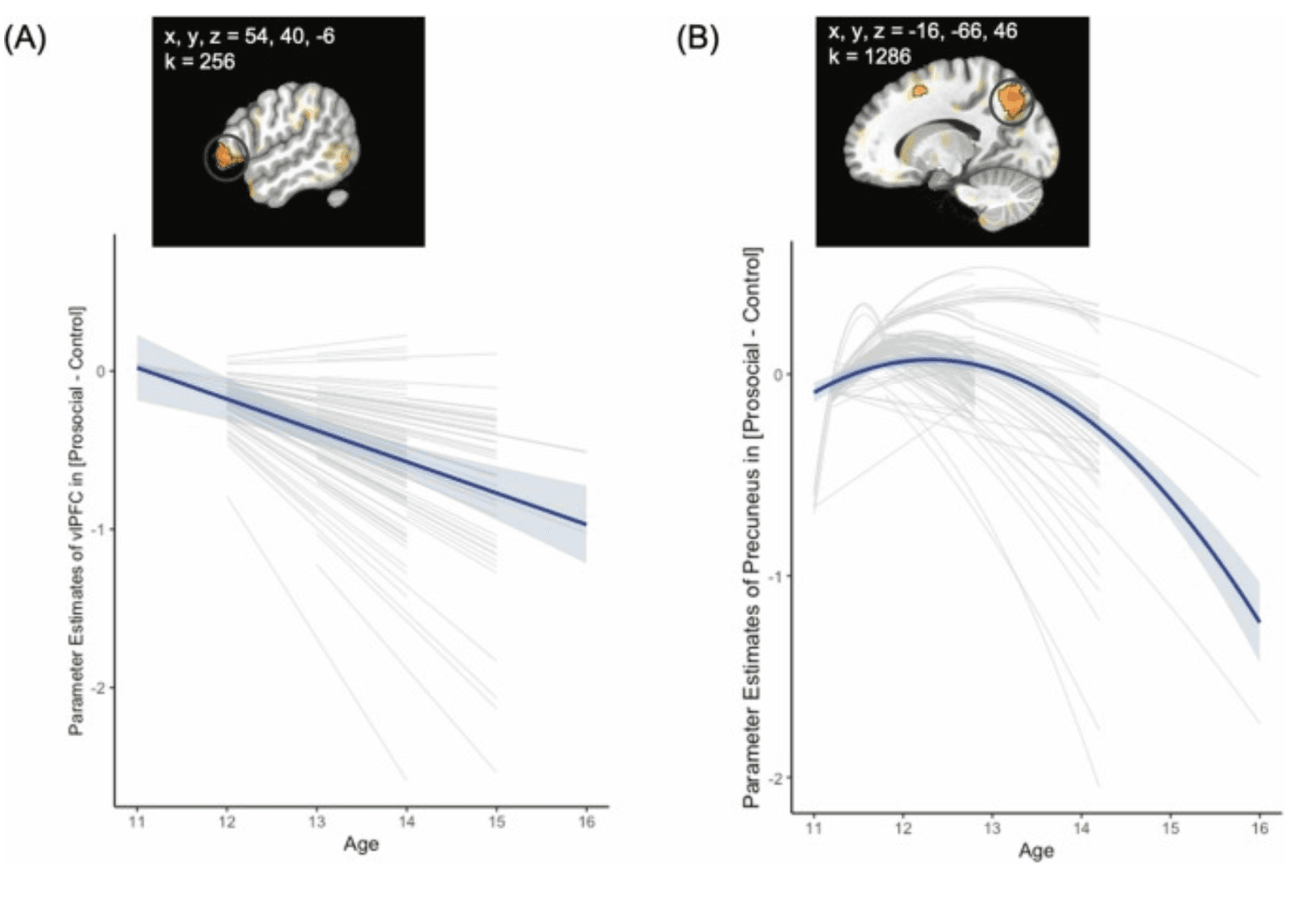
Fig. 3. Longitudinal whole-brain analyses identified age-related (A) decreases in the right ventrolateral prefrontal cortex (vlPFC) and (B) inverted U-shaped changes in the left precuneus when adolescents made prosocial relative to control decisions.
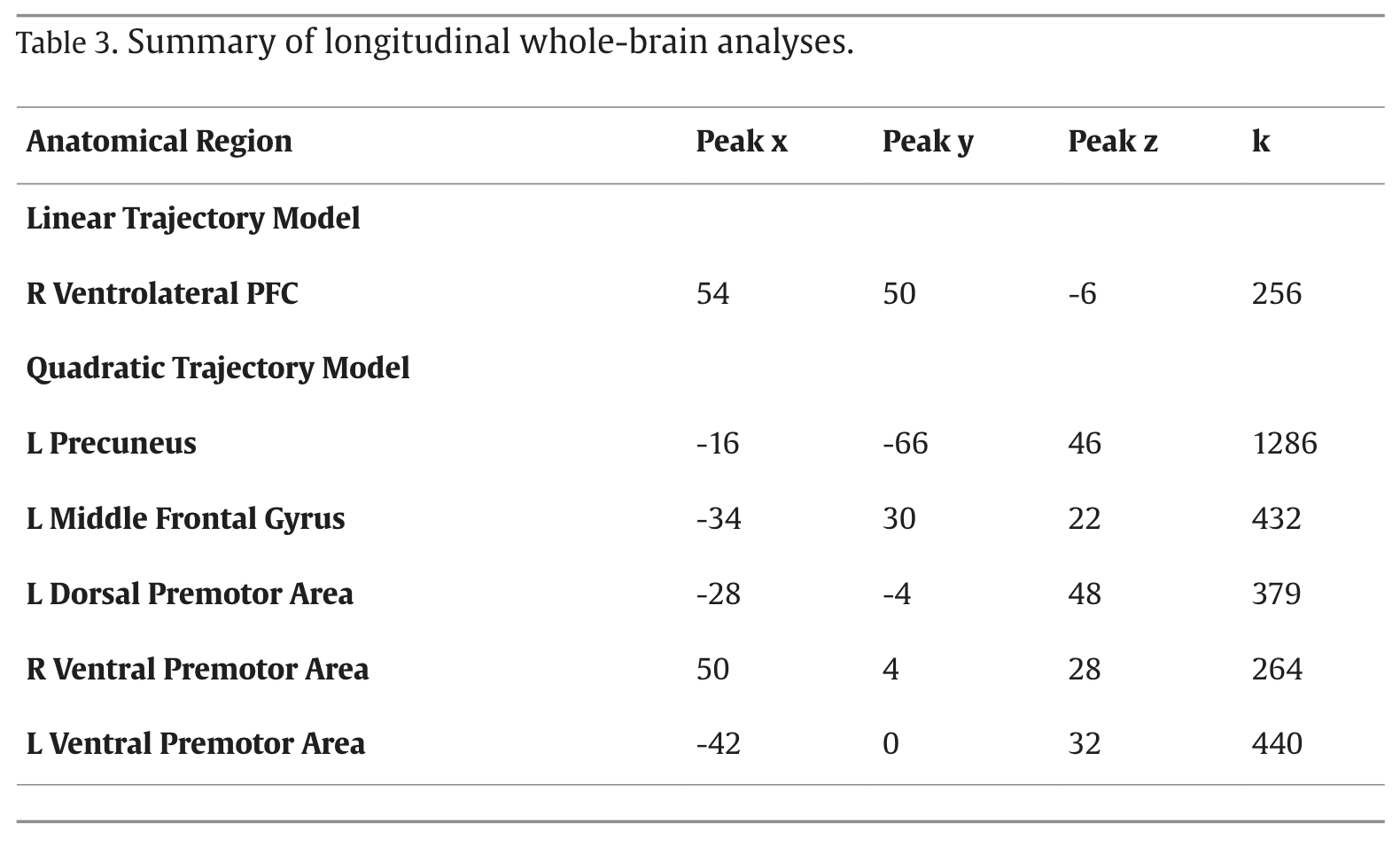
3.3. Neural changes predicting later daily prosocial behaviors
To examine how developmental changes in neural activation during prosocial decision-making predict future daily prosocial behaviors, we regressed daily prosocial behaviors assessed 2 years later (wave 5) onto the rate of change in neural activation (across the first 3 waves) during prosocial versus control decision-making. Daily prosocial behavior was operationalized as the average number of daily prosocial behaviors, and neural activation was operationalized as the parameter estimates extracted from the clusters identified from the longitudinal whole-brain analysis. On average, adolescents engaged in 1.15 prosocial behaviors everyday (SD = 0.97, range = 0 – 4). Regression analyses revealed a positive association between right vlPFC changes and later daily prosocial behavior (F(1,91) = 5.7, b = 1.72, p = 0.02), suggesting that greater right vlPFC activation increases were associated with greater daily prosocial behaviors 2 years later (Fig. 4). This association still holds when controlling for the average amount of time donated across the task at baseline (baseline is wave 1 if participants first completed the Donating Time Task at wave 1; baseline is wave 2 if participants first completed the Task at wave 2; F(2, 90) = 4.44, b = 2.02, p = 0.007). Thus, although right vlPFC activation during prosocial versus control decision-making decreased across age, less steep decreases in this change in the right vlPFC were associated with greater daily prosocial behaviors 2 years later. See supplementary materials for analyses on vlPFC changes predicting helping (family, friends, others) and community involvement two years later, separately, and on right vlPFC changes and daily prosocial behaviors one year later (wave 4).
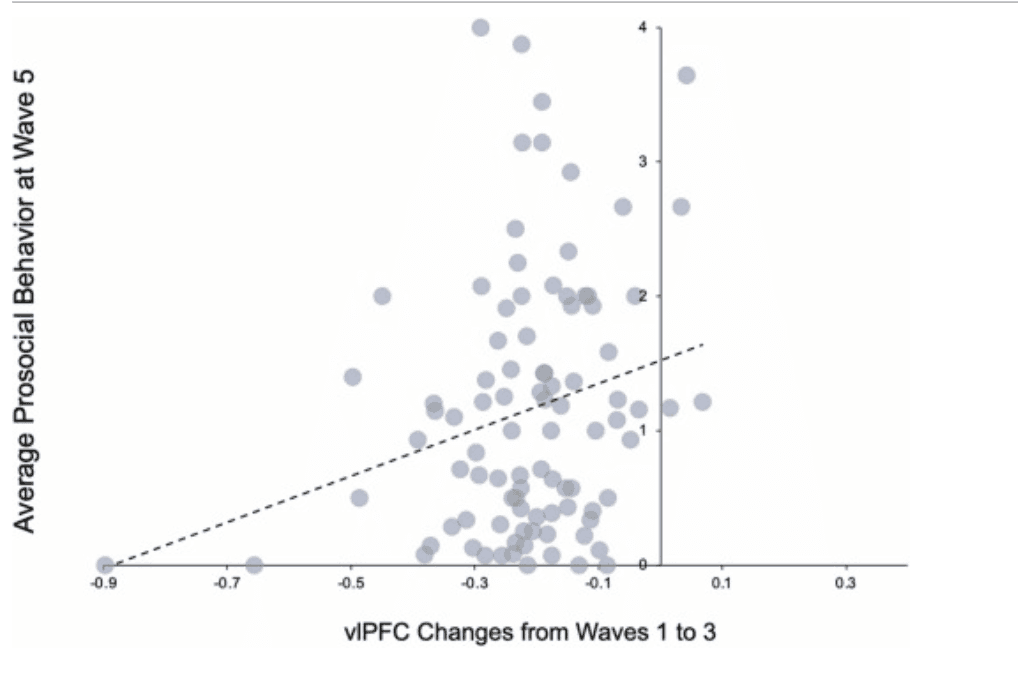
Fig. 4. Less steep decreases in the right vlPFC during prosocial relative to control decision-making were associated with greater daily prosocial behaviors 2 years later.
There was no significant association between left precuneus changes and later daily prosocial behavior (F(1,91) = 0.48, b = -2.92, p = 0.49), suggesting that the rate of nonlinear changes in the left precuneus (i.e., faster or slower inverted U-shaped changes) was not significantly associated with daily prosocial behaviors 2 years later.
4. Discussion
The current study examined adolescents’ intentions to donate their time to a variety of local charities across 3 years. We found that adolescents were willing to donate less time across age, which was paralleled by neural activity changes within the cognitive control (vlPFC) and social cognition (precuneus) systems of the brain. Interestingly, though vlPFC activation during prosocial donations, on average, decreased across age, less steep decreases in this activation were predictive of greater daily prosocial behaviors 2 years later.
There have been inconsistent findings as to whether prosocial behaviors rise or decline during adolescence (e.g., Carlo et al., 2007; Padilla-Walker et al., 2018). Our study investigated how adolescents donate their time to charities from early to mid adolescence and revealed that adolescents donated less time to charities across age, even if it was towards their top choice charity. Prior studies posit that whether prosocial behaviors increase or decrease during adolescence may depend on the timeframe (e.g., early to mid adolescence versus early adolescence to emerging adulthood) and the target of behavior (e.g., anonymous peer versus undefined stranger; Güroğlu et al., 2014; Padilla-Walker et al., 2018). Our findings are consistent with prior studies that have shown decreasing trends in prosocial behaviors within this specific window of adolescence (i.e., around mid adolescence; Carlo et al., 2007; Luengo Kanacri et al., 2013), suggesting that in the context of time donations to unknown or unfamiliar others within the community (i.e., not close others such as family and friends), prosocial behaviors also decrease from early to mid adolescence. One possible explanation of this decrease in prosocial donations may be due to shifts in various prosocial motivations that take place during adolescence (Carlo and Randall, 2002). On one hand, there are increases in anonymous prosocial motivation; however, on the other hand, there are decreases in public prosocial motivation (Davis et al., 2021). Thus, it is possible that adolescents’ prosocial behaviors may be increasingly driven by the desire to help others without public recognition (i.e., anonymous) and decreasingly driven by more outward forms of prosocial behaviors (i.e., public), perhaps leading to disparate findings within the literature. Although participants’ contributions (i.e., donating time to stuff envelopes) was anonymous to the charity, participants knew that the experimenter was watching their decisions outside of the scan room and so the task may have felt public. Taken together, consistent with prior studies demonstrating developmental declines in public prosocial motivations, adolescents may have decreased their prosocial donations in the presence of an observer.
At the neural level, we found decreases in vlPFC activation when adolescents donated their time across age. The vlPFC is involved in regulatory processing, and is thought to be involved in prosocial behaviors by discriminating self-motivated and prosocial intentions and subsequently overriding selfish intentions with the need to help others (Karan et al., 2022, Telzer et al., 2011). Thus, developmental decreases in the amount of time donated may be supported by the decreasing neurocognitive processing of cognitive and behavioral regulation during time donations.
Importantly, our study placed neurodevelopment in context and further examined the enduring effect of neurodevelopment on behavior two years later. We found that developmental changes in the vlPFC during time donations are prospectively linked to prosocial behaviors in youth’s daily lives such that a less steep developmental decline in vlPFC activation may be promotive of prosocial behaviors 2 years later. Thus, individual differences in the development of vlPFC activation have important implications for future behaviors of helping both close others (e.g., family, friends) and the community (e.g., activism). Given that greater vlPFC recruitment is often linked to greater prosocial behaviors, less steep declines in the vlPFC and therefore sustaining higher regulatory processing may be associated with greater inhibition of selfish intentions and therefore greater contribution to one’s own social environment. Adolescents’ initial levels of effortful control is linked to slower declines in self-reported prosociality across time, conferring a longitudinal relation between regulatory processes and prosocial behavior (Luengo Kanacri et al., 2013). Our findings extend this understanding by demonstrating a longitudinal brain-behavior relation, such that the rate of change in vlPFC development is prospectively linked to everyday engagement of prosocial behaviors.
We also found nonlinear, inverted U-shaped changes in precuneus activation when adolescents donated their time such that precuneus activation increased from ages 11–13, before declining. The precuneus is part of the social brain network, with functional roles in many social-cognitive processes such as third-person perspective-taking or thinking about someone else’s point of view (e.g., Sebastian et al., 2012). The precuneus is often involved in prosocial behavior. For instance, the precuneus is sensitive to the amount of prosocial donations such as costly versus non-costly and high versus low donations, and this is thought to represent the varying levels of perspective-taking engagement during these prosocial behaviors (e.g., Do et al., 2019; Kwon et al., 2023; van de Groep et al., 2022). In addition, our curvilinear changes in precuneus activity are consistent with prior findings that precuneus activity during prosocial behavior steadily increases from childhood to early adolescence and peaks in early adolescence (Do et al., 2019). Despite the changing engagement of the precuneus in a nonlinear manner, the rate of change in precuneus development (i.e., faster or slower inverted U-shaped changes, or how fast or slow the peak occurs) was not significantly associated with prosocial behaviors 2 years later. Therefore, nonlinear neurocognitive processing of perspective-taking during time donations may not necessarily serve as a neural marker of future prosocial behaviors.
Interestingly, we did not find developmental changes in other hypothesized regions such as the VS. Though unexpected, a prior developmental neuroimaging study that examined monetary donations to close others also did not observe developmental changes in the VS, which the authors speculate that this effect may be due to the lack of late adolescents in the study sample; prior studies have shown VS activation peaks in mid adolescence, thus requiring the inclusion of late adolescents for such peak to be observed (Braams and Crone, 2017, Karan et al., 2022). Our study also did not include late adolescents, which could have limited any age-related observations of the VS from early to mid adolescence. Moreover, though our study did not examine functional coupling involving the VS, functional connectivity between the VS and social brain regions (e.g., VS-pSTS, VS-mPFC) and as well as cortical regions (e.g., VS-OFC) during various prosocial behaviors are thought to subserve prosocial behaviors (Do and Telzer, 2019, Telzer et al., 2011, Uy et al., 2023). As this connectivity also develops across adolescence, one avenue for future research is to examine how reward processes act in concert with other psychological processes during time donations across adolescent development (van Duijvenvoorde et al., 2019).
The current study is the first study to longitudinally examine how adolescents donate their time to charities and subsequently link the neural correlates of time donations with daily prosocial behaviors 2 years later. Our study comprises of multiple strengths, including using longitudinal whole-brain analyses, testing individual differences in neurodevelopment, and assessing real-life prosocial behaviors in adolescents’ daily lives. However, there are a number of limitations that future studies should address. First, we did not assess how adolescents donate their time to more salient targets such as their close others (e.g., families, friends). Similarly, though we asked participants to rank their top charity, we did not access how salient these charities were to our adolescent sample. Next, we did not assess the daily diary methodology in the first 3 waves of the study, limiting our ability to understand how adolescents’ daily prosocial behaviors may have changes developmentally across the study period.
Adolescence is a time of rising independent decision-making and contribution to society, highlighting this developmental period as an opportunity for helping others. Our study demonstrates that adolescents donated less time to charities across age, which was paralleled by decreased recruitment of the vlPFC. However, a less steep decline in the vlPFC was promotive of prosocial behaviors for both close others and the greater good 2 years later, revealing the lasting effect of neurodevelopment on adolescent prosocial behaviors and identifying the vlPFC as a neural marker of adolescent prosocial behaviors.